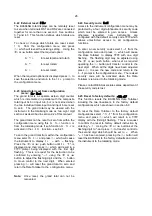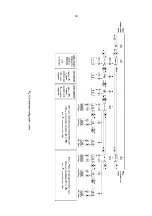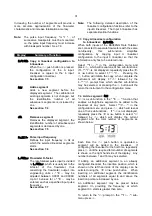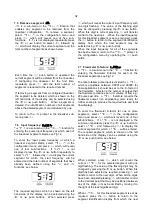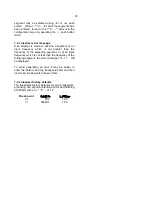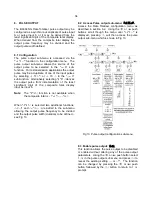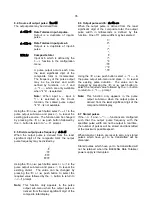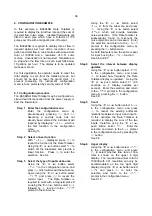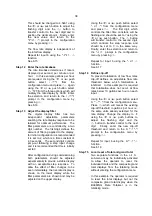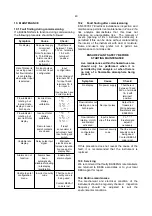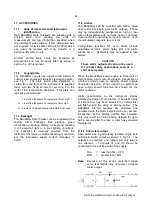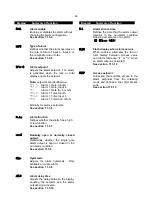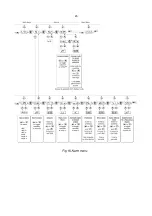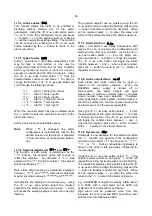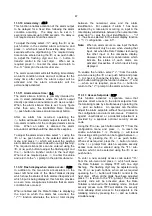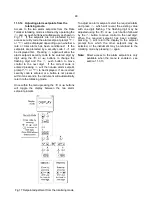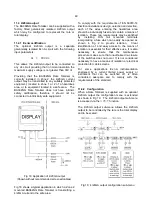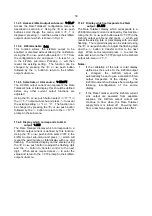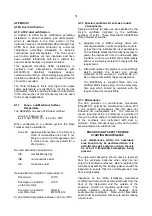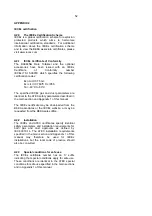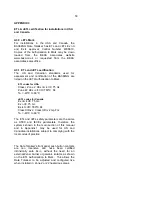
42
11. ACCESSORIES
11.1
Units of measurement & instrument
identification.
New BA384NG Rate Totalisers are supplied with a
printed scale card showing the units of
measurement and tag information specified when
the instrument was ordered. If this information was
not supplied a blank scale card will be fitted which
can easily be marked with a dry transfer or a
permanent marker on-site.
Custom printed scale cards are available as
accessories and may be easily fitted as shown in
section 5.4 of this manual.
11.2
Legend plate
The BA384NG can also be supplied with a blank or
custom laser engraved stainless steel legend plate -
see Fig 7. The plate, which after installation is
visible from the front of the instrument, is supplied
loose with two fixing screws for securing it to the
rear of the instrument's back-box. This plate can
typically accommodate:
1 row of 5 alphanumeric characters 10mm high
or 1 row of 6 alphanumeric characters 7mm high
or 2 rows of 10 alphanumeric characters 5mm high
11.3 Backlight
The BA384NG Rate Totaliser can be supplied with a
factory fitted backlight that produce green
illumination enhancing display contrast and enabling
it to be read at night or in poor lighting conditions.
The backlight is internally powered from the
instrument therefore no additional wiring is required,
but the instrument supply current increases to
32mA.
11.4 Alarms
The BA384NG can be supplied with factory fitted
dual solid state single pole alarm outputs. These
may be independently configured as high or low,
rate or total alarms with normally open or normally
closed outputs functioning on input A, input b, or on
the calculated composite rate or total.
Configurable functions for each alarm include
adjustable setpoint, alarm delay time and alarm
silence time. Hysteresis may be applied to rate
alarms.
CAUTION
These alarm outputs should not be used
for critical safety applications such as a
shut down system.
When the BA384NG power supply is turned off or
disconnected, alarm outputs will open irrespective of
whether normally open or normally closed outputs
have been selected. When designing a system an
open output should therefore be chosen for the
alarm condition.
Alarm annunciators on the instrument display
indicate the status of both alarms. If an alarm delay
or silence time has been selected the annunciator
will flash during the delay or silence period. The
BA384NG internal counters are up-dated and
compared with the alarm setpoint twice per second,
irrespective of the display update time selected.
This may result in an alarm being delayed for up to
half a second after the rate or total has exceeded
the setpoint.
11.4.1 Solid state output
Each alarm has a galvanically isolated single pole
solid state switch output as shown in Fig 14. The
outputs are polarised and current will only flow in
one direction. Terminals A1 and A3 should be
connected to the positive side of the supply.
Ron
=
less than 5
Ω
+ 0.7V
Roff
=
greater than 1M
Ω
Note:
Because of the series protection diode
some test meters may not detect a closed
alarm output.
Fig 14 Equivalent circuit of each alarm output

